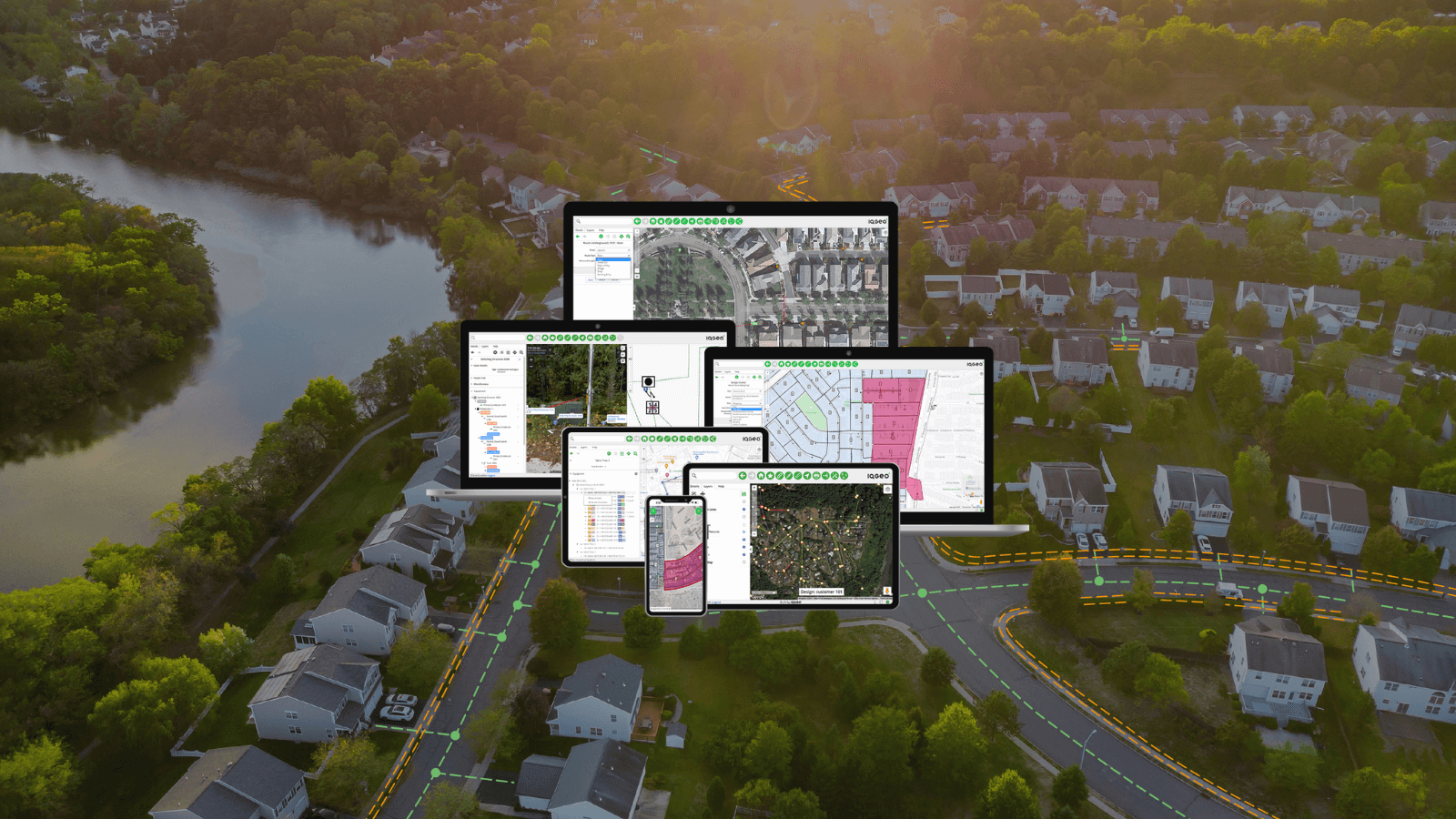First off, what is FTTx? Fiber to the x or FTTx is a common term used for a broadband optical fiber network architecture that provides full or part of the line used for the last mile connection to the user. FTTx is a collective term used for various versions of fiber deployment. These configurations are categorized based on where the fiber ends.
The fiber network terms most often used today:
- Fiber to the home (FTTH) or Fiber to the Premise (FTTP): Fiber terminates where the living space begins. At the box on the outside wall of a home for example. This is a full fiber connection.
- Fiber to the Building (FTTB): Fiber terminates at the boundary of the building. For instance at the box in the basement of an apartment building.
- Fiber to the Node (FTTN): In this case, fiber stops at the street cabinet, which can be miles away from the customers’ premise. The last mile connection is coax.
- Fiber to the Curb or Cabinet (FTTC): This is similar to FTTN, except that fiber is terminated at a cabinet or box closer to the premises, less than one mile away. The last mile connection is copper wire.
- Fiber to the Antenna (FTTA): This is when an antenna is fed with fiber (also known as fiber backhaul). An FTTA architecture it is needed to serve the high 5G bandwidth requirements.

Why is FTTx planning and design so important?
Deploying a fiber to the x network is an expensive and time-consuming process. The cost per home can vary significantly depending on how close you bring fiber to the home and the density of the area. The cost per home passed can vary between a couple of hundred dollars to a few thousand dollars. For large projects, the FTTx network building and maintenance costs can run into billions.
So, making strategic decisions and optimal designs is a crucial step to optimize your budget. You can roughly divide the process of FTTx network planning and design into three stages, with each stage having its own objectives and outcomes.
These stages are:
-
Strategic network planning
-
High-level network design
-
Detailed network design
How to start with strategic fiber network planning
An FTTx project starts with strategic network planning. Most of the business decisions are made in this stage. Here, the operator needs to find the answer to the following questions:
-
What type of network do I want to deploy?
-
Where am I going to deploy it?
-
When should I deploy it?
As seen above, there are many different FTTx deployment flavours. And even within one flavour you need to make a lot of architectural decisions.
The planner first estimates the cost of deploying an FTTx network. He compares different topologies and architectures over multiple areas. By doing this, he determines which network rules suit the best across multiple areas.
He also evaluates the possible return on investment. For this he uses marketing data such as the percentage of people willing to pay for a fiber-based connection and the average expected monthly revenue per user. He needs to figure out these numbers as accurate as possible, typically without a lot of information available.
Traditionally he trusts hand drawn designs and spreadsheet calculations to create his business case. And present this information to the highest level of decision-makers.
Although using Excel and other drawing tools might seem a cost-efficient solution, it can prove to be time-consuming and error-prone. Accuracy is key in this, and every, stage as mistakes can turn out to be very pricy. Underestimating deployment costs or the expected adoption can cause the project to fail.
Automated planning solutions for fiber deployment
Today, many automated and optimized FTTx network planning tools are available. They expedite the planning procedure and deliver accurate cost estimates.
These tools use Geographic Information System (GIS) data of the target area and design the network automatically based on user-defined network rules. These rules contain labour and material costs for all the network elements, and a description of the network architecture. Based on this info, the software generates visual network designs and supplies an extensive bill of materials.

Tools like this allow you to carry out simulations for multiple areas in parallel. Or the user can apply multiple rules on the same area and evaluate the results of different scenarios through head-to-head comparisons on the same screen. They deliver accurate high-level cost results as well as ROI calculations using marketing data.
The accuracy and details of these calculations lower the risk significantly. They also empower the planner to save time, eliminate monotonous tasks and make the whole process error-free, while still staying in control.
Discover more about the benefits of an automated planning and design process and how IQGeo can help you maximize fiber network ROI, book a demo with our industry experts and see our end-to-end fiber network management software in action.
Comsof Fiber is the leading automated fiber planning and design software for telecom operators and engineering firms who want to quickly and cost-effectively scale their fiber-optic networks.
Similar articles:


 Previous
Previous







